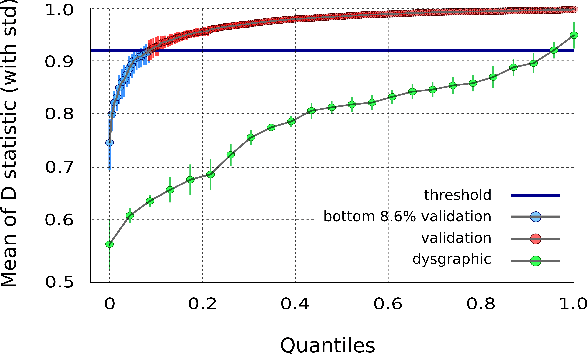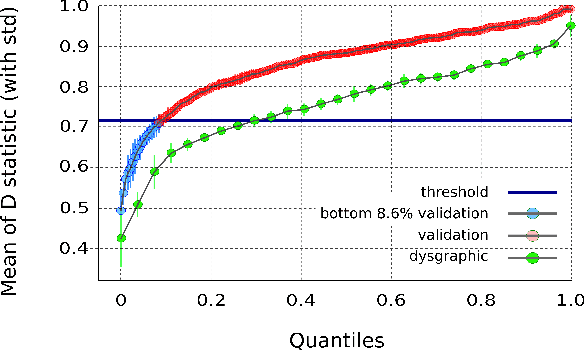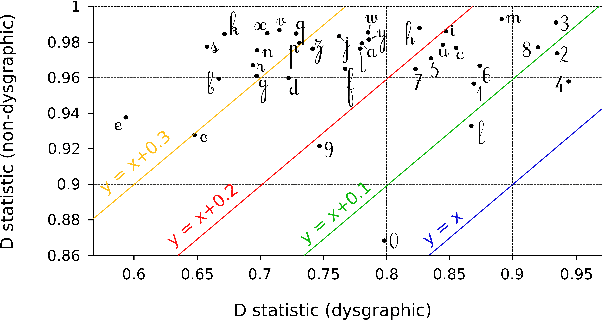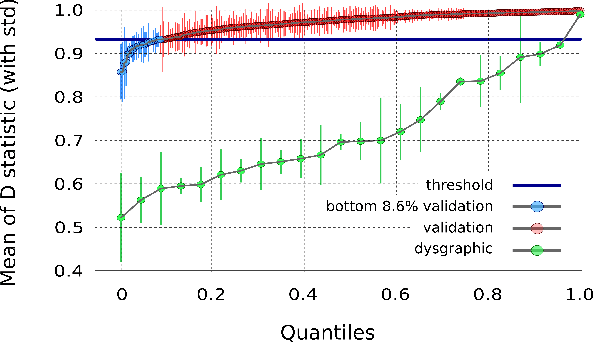Laurence Casteran
The Dynamics of Handwriting Improves the Automated Diagnosis of Dysgraphia
Jun 12, 2019



Abstract:Handwriting disorder (termed dysgraphia) is a far from a singular problem as nearly 8.6% of the population in France is considered dysgraphic. Moreover, research highlights the fundamental importance to detect and remediate these handwriting difficulties as soon as possible as they may affect a child's entire life, undermining performance and self-confidence in a wide variety of school activities. At the moment, the detection of handwriting difficulties is performed through a standard test called BHK. This detection, performed by therapists, is laborious because of its high cost and subjectivity. We present a digital approach to identify and characterize handwriting difficulties via a Recurrent Neural Network model (RNN). The child under investigation is asked to write on a graphics tablet all the letters of the alphabet as well as the ten digits. Once complete, the RNN delivers a diagnosis in a few milliseconds and demonstrates remarkable efficiency as it correctly identifies more than 90% of children diagnosed as dysgraphic using the BHK test. The main advantage of our tablet-based system is that it captures the dynamic features of writing -- something a human expert, such as a teacher, is unable to do. We show that incorporating the dynamic information available by the use of tablet is highly beneficial to our digital test to discriminate between typically-developing and dysgraphic children.
 Add to Chrome
Add to Chrome Add to Firefox
Add to Firefox Add to Edge
Add to Edge